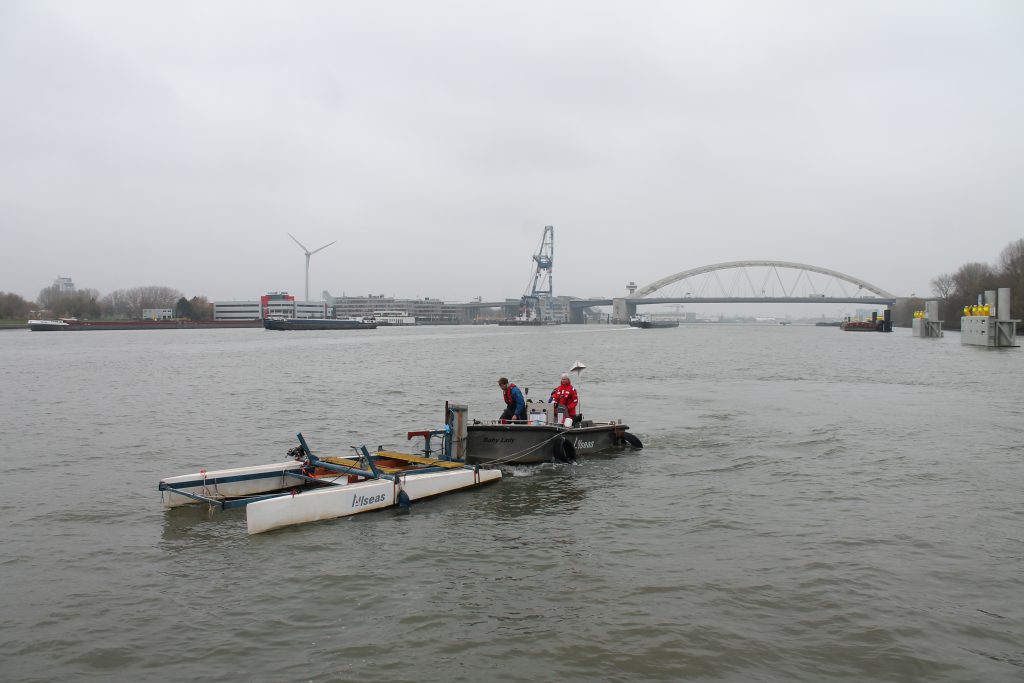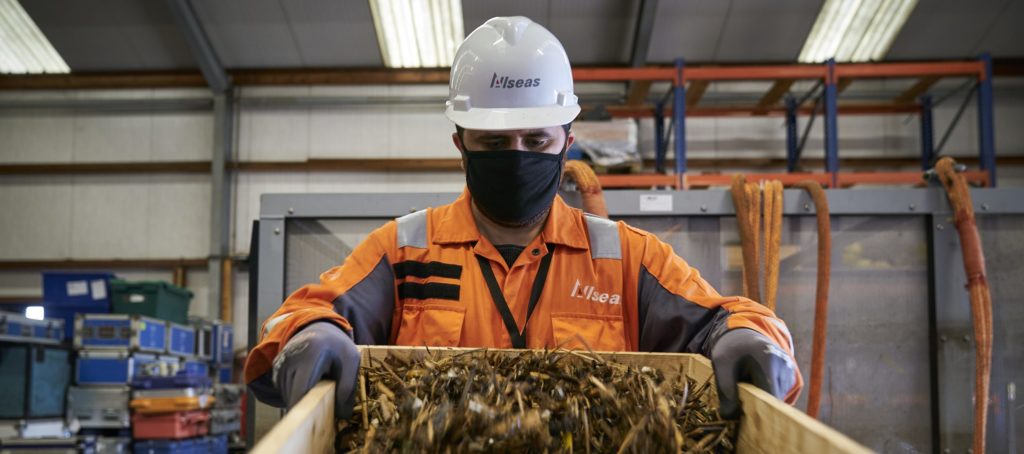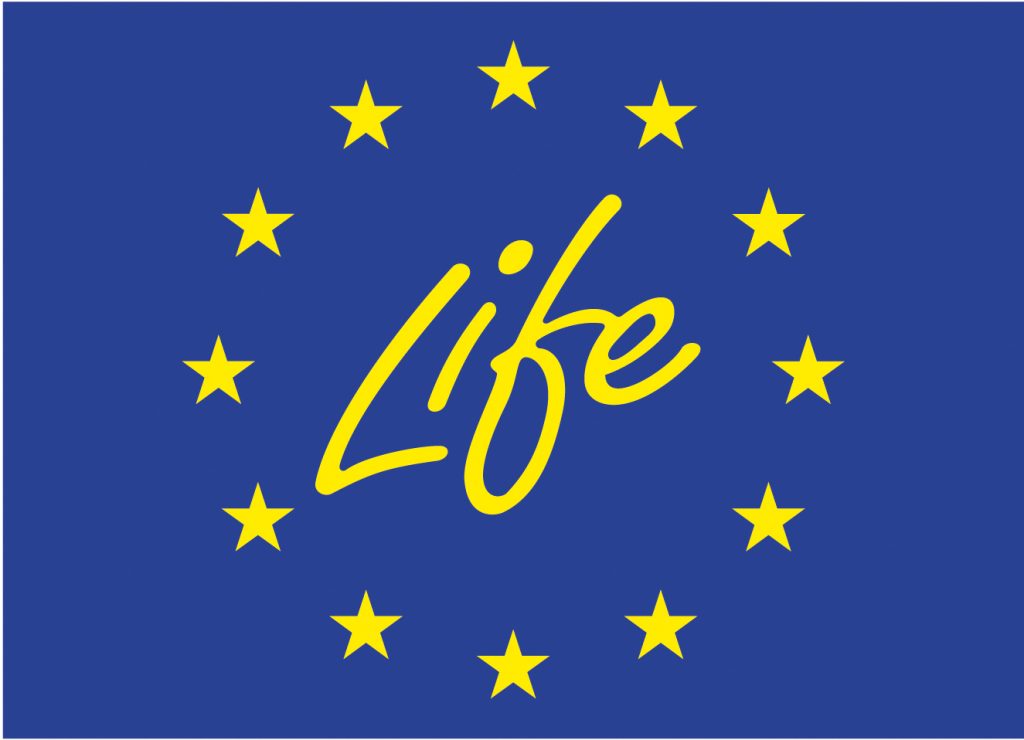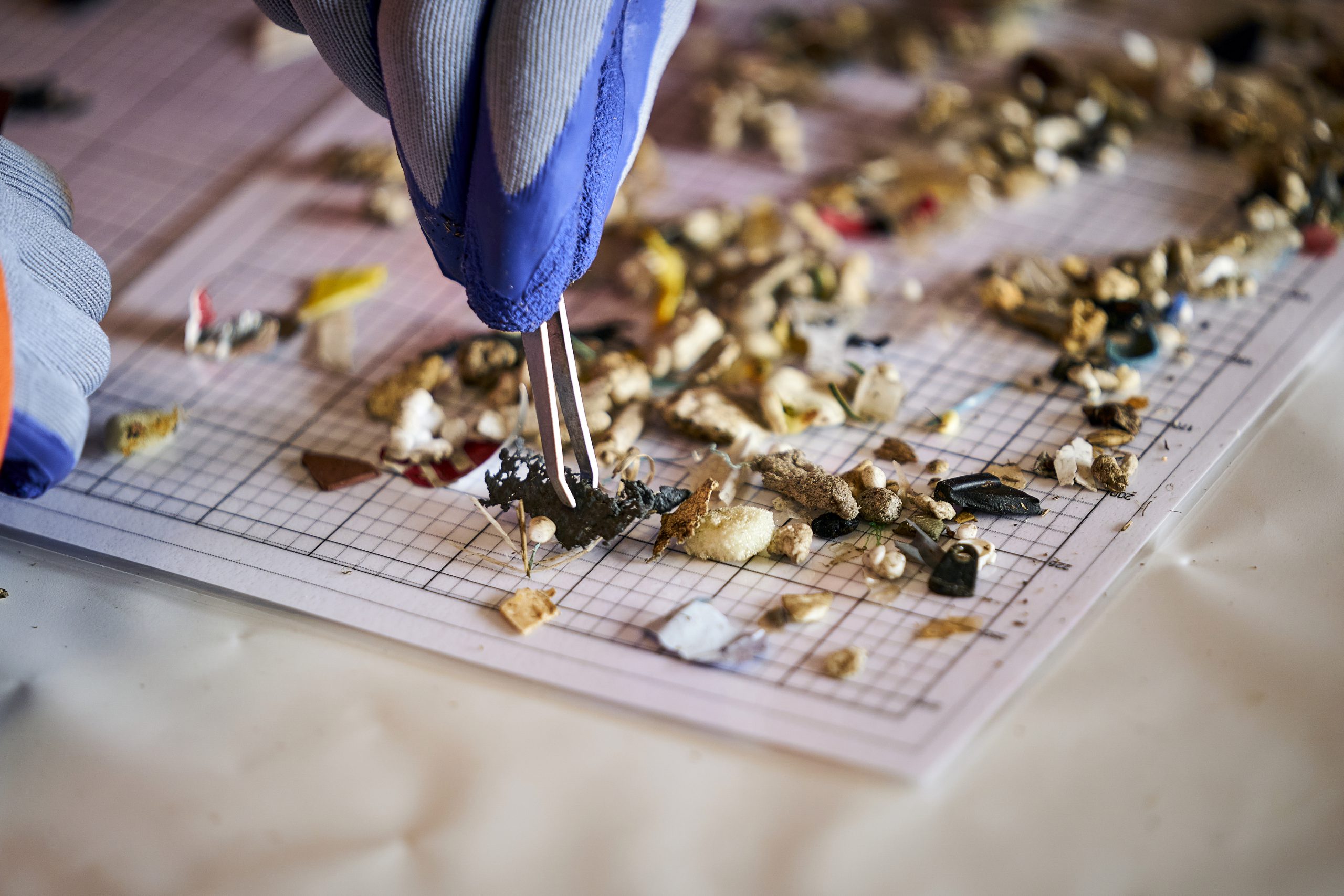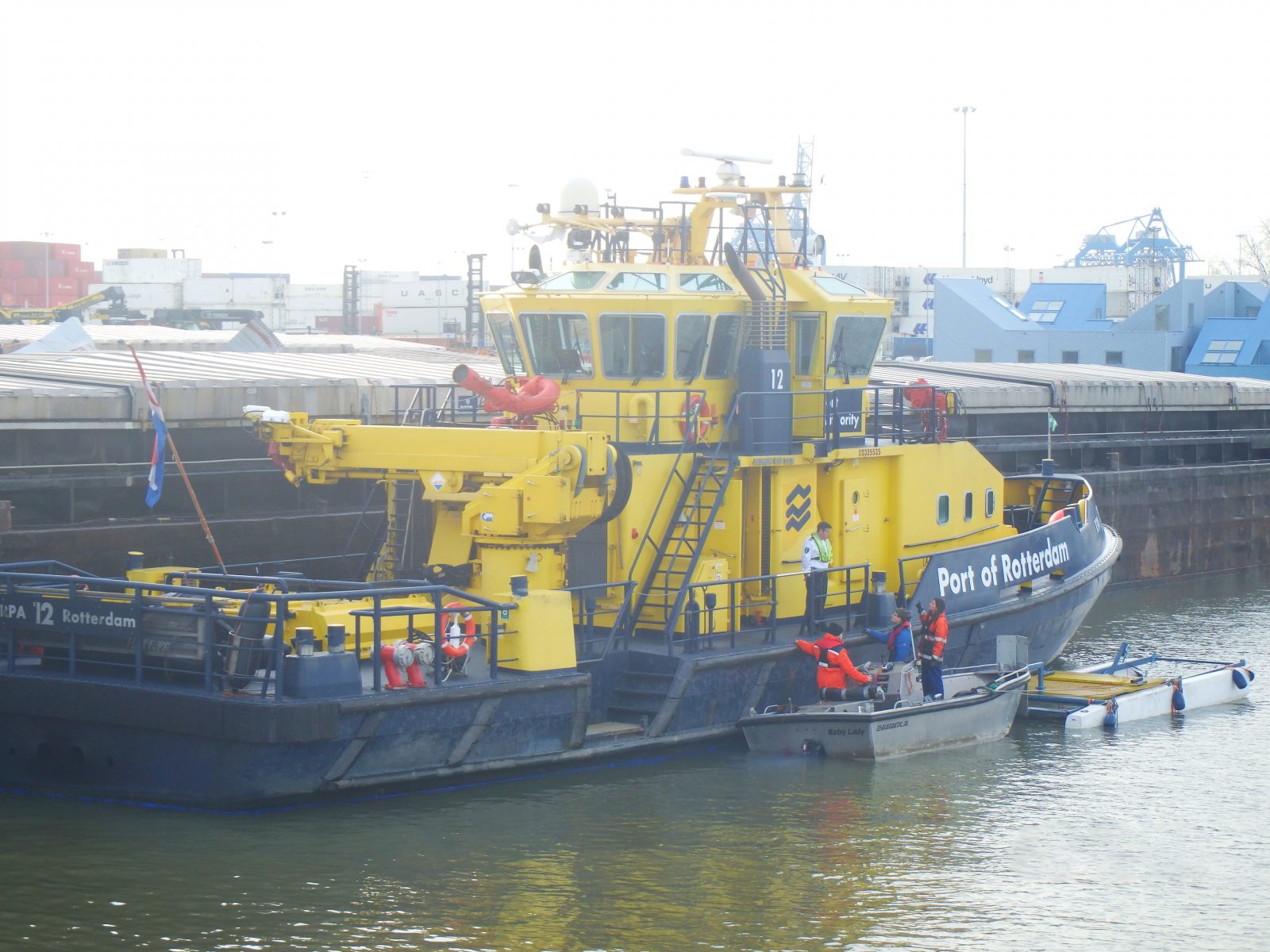Research & analysis
Analysing the quantities and distribution of plastics in rivers
A key objective of the plastic project is to develop knowledge on the quantities and distribution of macro- (> 5mm) and micro-plastics (< 5 mm) in rivers as the right knowledge is essential for success. The project team has been performing tests with its plastic sampler, a special plastic monitoring vessel developed by Allseas for research, at different locations on the Nieuwe Maas river in the Netherlands. The sampler comprises of three nets set at different water depths so the vertical distribution of plastics can be investigated in various zones of the river. Factors such as wind and current are recorded in order to assess their effect on the distribution of plastics.
The litter collected with the sampler is analysed in three different ways. One in-house analysis, the OSPAR method and an IR-scan. The litter is sorted by size and material type. Macro litter is analysed at Allseas’ laboratory. For micro plastics, Allseas collaborates with the chemistry and biomedical departments of the Hogeschool Rotterdam. The results are later used to help predict plastic waste hotspots.
Identifying hotspots
On the topic of identifying hotspots, transport and distribution of hotspots within rivers is so important, Allseas collaborated with Deltares, a large technical institute in Delft, to create a riverine transport assessment tool on an academic level. The research involves numerical calculation of transport of macro- and micro-plastic, based on numerous variables such as current and wind. Research has been done to categorise the debris in dominant size, shape and density and how this determines transport routes. With this information, hotspots can be identified more easily.
Read Deltares’ report Towards guidelines for effective plastic removal from rivers“.
Tools for riverine plastic discovery
Recovering plastics from rivers requires innovative technologies and strategies. If there is one thing with innovation, that would be that there is often more than meets the eye. In this case, Allseas has partnered with PRé Sustainability, a company known for data-based assessment tools, to develop just that for riverine plastic recovery. The tool measures the impact of the production, installation and operation of a plastic recovery system in terms of greenhouse gas emissions. This data is compared with the data of the greenhouse gas emissions that can be saved when the catch is recycled properly. Read the report about the environmental impact and life cycle analysis of the plastic removal systems.
Post processing and recycling
Lastly, Allseas is looking at purpose for the catch, researching the possibilities of post-processing. Subjects of this research are NTCP mechanical sorting and recycling, Hydrocat hydro-pyrolysis and Geocylce’s co-processing. These are all very official terms, so here is a short explanation: Mechanical recycling is a process where the plastics caught is shredded into small parts, to be used again as resource for new products. Plastics do need to be cleaned before this process can be effective. Hydro-pyrolysis is a process going a step further, breaking down plastics chemically, with a multi-purpose oil as end product. Finally, Allseas has partnered with Geocycle, a company that uses waste as resource for cement production in operation called co-processing, where simultaneous recycling of mineral materials and recovery of energy are combined. For more detailed information on the research we do, send us an e-mail.
Allseas’ river plastics removal project has received funding from the LIFE programme of the European Union. Grand agreement number LIFE17/ENV/NL000339.
Return to main page of Allseas’ river plastics removal.


